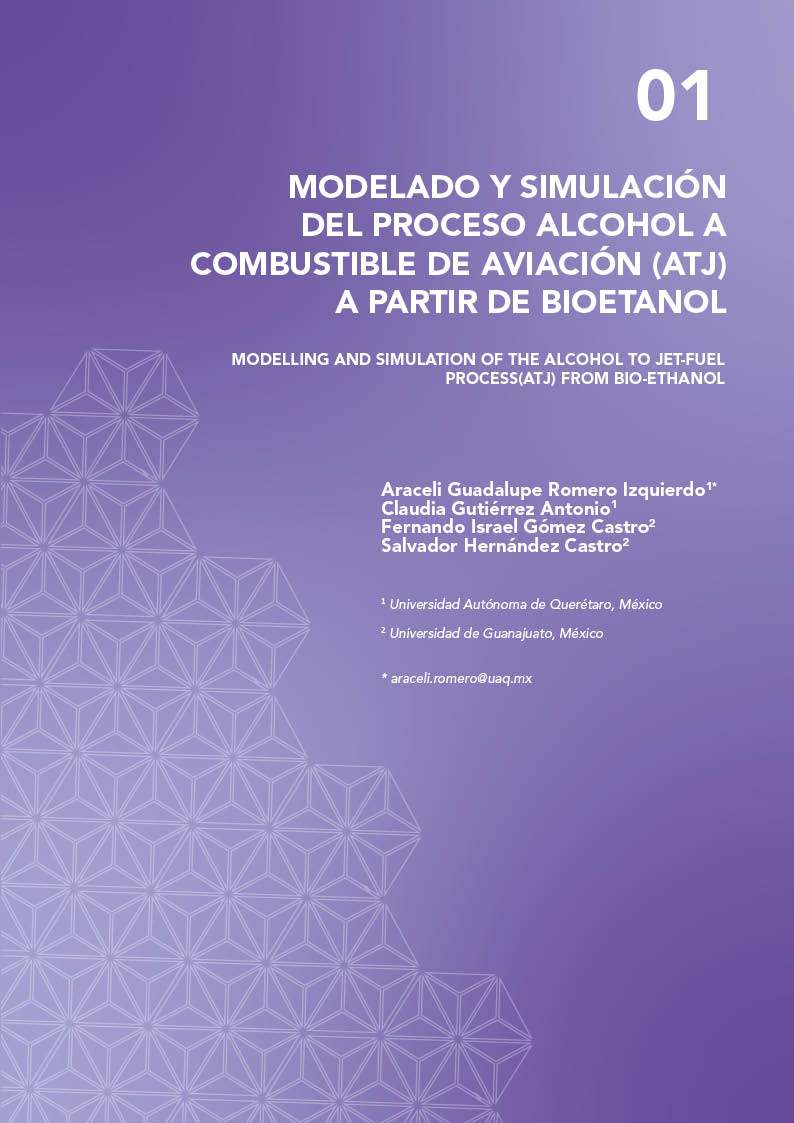Resumen
La gran dependencia del ser humano con los combustibles fósiles como fuente de energía ha tenido como consecuencia severos daños ambientales; por lo que varios autores han propuesto y estudiado fuentes alternativas, limpias y sostenibles de energía. Esto ha sido confirmado en 2020 frente a la pandemia por COVID-19, en la cual se ha identificado a las energías renovables como la única fuente de energía resiliente y de bajo impacto. En este sentido, el sector transporte, específicamente el aéreo, continúa con el objetivo de reducir sus emisiones de CO2 para 2050 utilizando como estrategia prioritaria el combustible de aviación renovable. Uno de los procesos certificados por ASTM para su obtención es el de alcohol a combustible de aviación (ATJ), el cual utiliza como materia prima alcoholes generados a partir de biomasa. Sin embargo, el proceso ATJ ha sido poco desarrollado a nivel comercial para la producción de bioturbosina; por ello deben enfocarse los esfuerzos en proponer estrategias que permitan reducir sus costos de producción. Una manera de analizar esas estrategias se basa en el uso de modelos de simulación. Así, en este trabajo se presenta el modelado y la simulación del proceso ATJ a partir de bioetanol, obtenido previamente de la conversión de residuos lignocelulósicos, para la producción de combustible de aviación renovable. La simulación del proceso se lleva a cabo en el software Aspen Plus V.10.0. Este proceso es evaluado y analizado en términos del costo total anual y las emisiones de CO2 generadas. De acuerdo con los resultados, se obtiene 21.1 % de conversión a bioturbosina, respecto al bioetanol de alimentación, representando el 35.3 % de los productos generados. Por su parte, el 86.3 % del TAC corresponde al costo del hidrógeno requerido por el proceso. En lo que respecta a las emisiones de CO2 se tiene un ahorro anual estimado de 65,741.04 ton CO2, debido a que los requerimientos eléctricos del proceso representan sólo el 23.7 % de la electricidad generada por las turbinas acondicionadoras de las corrientes de proceso. De acuerdo con este análisis, el proceso ATJ es una alternativa promisoria para la obtención de bioturbosina.
Referencias
IEA, “COVID-19 – Topics - IEA,” International Energy Agency, 2021.
K. Dube, G. Nhamo, and D. Chikodzi, “COVID-19 pandemic and prospects for recovery of the global aviation industry,” J. Air Transp. Manag., vol. 92, 102022, 2021.
C. Gutiérrez-Antonio, A. G. Romero-Izquierdo, F. I. Gómez-Castro, and S. Hernández, Production Processes of Renewable Aviation Fuel, Elsevier, 2021.
D. Chiaramonti, “Sustainable Aviation Fuels: the challenge of decarbonization,” Energy Procedia, vol. 158, pp. 1202–1207, 2019.
A. G. Romero-Izquierdo, F. I. Gómez-Castro, C. Gutiérrez-Antonio, S. Hernández, and M. Errico, “Intensification of the alcohol-to-jet process to produce renewable aviation fuel,” Chem. Eng. Process. - Process Intensif., vol. 160, 108270, 2021.
A. G. Romero-Izquierdo, “Diseño, modelado y simulación de un esquema de biorefinería para el aprovechamiento integral de mezclas de materias primas renovables,” Universidad de Guanajuato, PhD Thesis, 2020.
M. Arvidsson, and B. Lundin, “Process integration study of a biorefinery producing ethylene from lignocellulosic,” Chalmers University of Technology, Master Thesis, 2011.
J. Heveling, C. P. Nicolaides, and M. S. Scurrell, “Catalysts and conditions for the highly
efficient, selective and stable heterogeneous oligomerisation of ethylene,” Appl. Catal. A Gen., vol. 173(1), 1–9, 1998.
S. Moussa, M. A. Arribas, P. Concepción, and A. Martínez, “Heterogeneous oligomerization of ethylene to liquids on bifunctional Ni-based catalysts: The influence of support properties on nickel speciation and catalytic performance,” Catal. Today, vol. 277, 78–88, 2016.
E. Carlson, “Don´t Gamble with Physical Properties for Simulations,” Chem. Eng. Progress, October, 35-46, 1996.
R. Turton, R. C. Bailie, W. B. Whiting, J. A. Shaeiwitz, and D. Bhattacharyya, Analysis, Synthesis, and Design of Chemical Processes, Fourth Edition, Prentice Hall, 2012.
C. Gutiérrez-Antonio, A. G. Romero-Izquierdo, F. Israel Gómez-Castro, and S. Hernández, “Energy Integration of a Hydrotreatment Process for Sustainable Biojet Fuel Production,” Ind. Eng. Chem. Res., vol. 55(29), 8165–8175, 2016.

Esta obra está bajo una licencia internacional Creative Commons Atribución-NoComercial-CompartirIgual 4.0.
Derechos de autor 2023 Perspectivas de la Ciencia y la Tecnología

